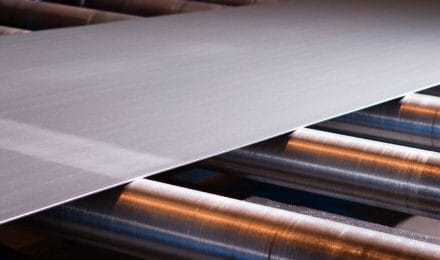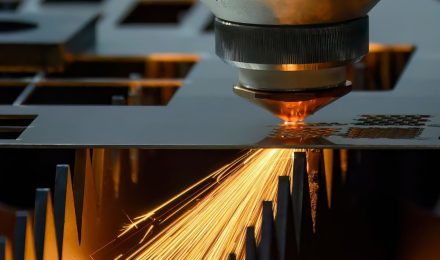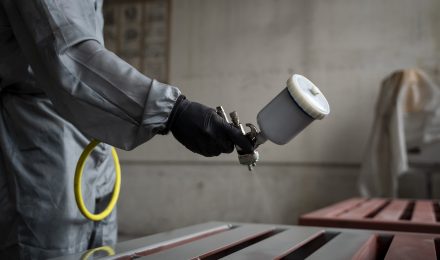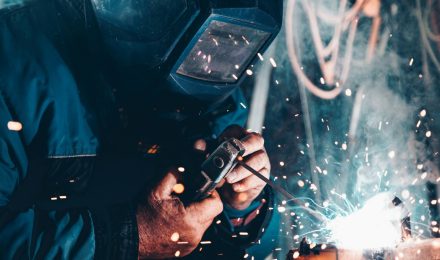Metal finishing plays a big role across various industries, from automotive to construction, as it helps protect and improve the appearance of metal components. Two common methods for finishing metals are powder coating and liquid painting, each offering different benefits. The choice between powder coating vs liquid painting often depends on specific project requirements, such as durability, environmental impact, and aesthetic preferences. In this article, we’ll compare powder coating vs liquid painting and examine the features of both to help you make the right choice for your metal finishing needs
Powder Coating vs Liquid Painting: What Are the Differences?
What is Powder Coating?
As a popular method in powder coating vs liquid painting comparisons, Powder coating is a metal finishing process where a dry powder, made up of fine particles such as resins, pigments, and additives, is electrostatically applied to a metal surface. This powder adheres to the surface due to an electrical charge, and the coated metal is then heated in a curing oven, where the powder melts and forms a solid, smooth coating. The result is a durable finish resistant to chips, scratches, and wear. Powder coating can achieve a variety of finishes, including matte, gloss, and textured options, making it suitable for both functional and decorative purposes.
What is Liquid Painting?
Particularly relevant in powder coating vs liquid painting discussions, liquid painting involves applying a liquid solution, typically composed of pigments, binders, and solvents, to a metal surface. This solution can be applied using different methods, such as spraying, brushing, or dipping, depending on the specific project requirements. Once applied, the liquid coating dries as the solvents evaporate, leaving behind a solid layer of paint. Some liquid coatings require an additional curing process, such as baking, to provide proper adhesion and durability. Liquid painting is commonly used in industries where customisation and a wide range of finishes, such as metallic or pearlescent effects, are wanted.
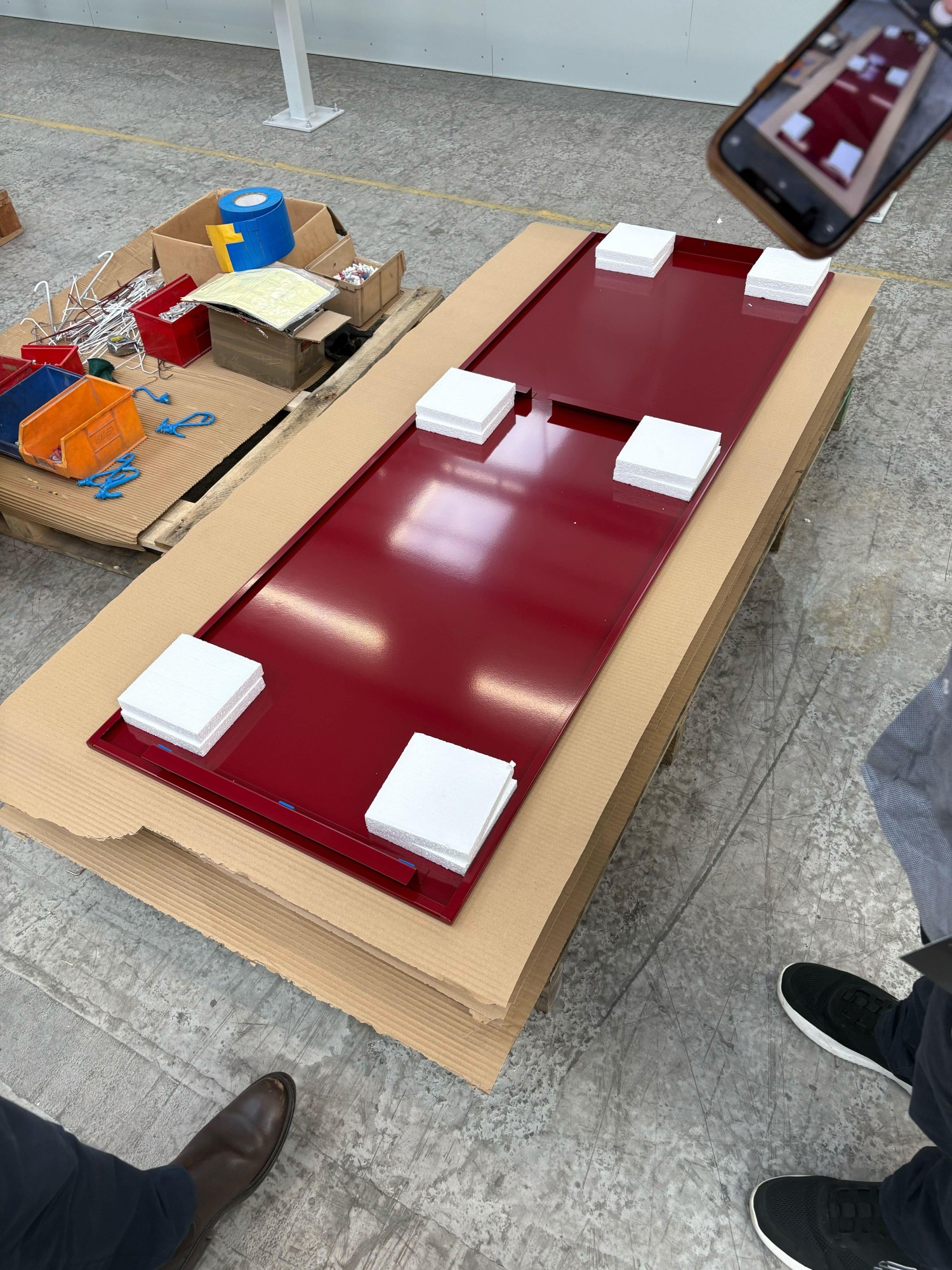
Application Process
If you’re a DIY enthusiast working on a small project, liquid painting may be more accessible, as it can be applied using simple tools like spray cans or brushes. However, powder coating typically requires industrial equipment such as an electrostatic spray gun and a curing oven, making it more suitable for larger-scale projects or professional setups.
Both methods require careful surface preparation to make sure the coating adheres properly. For powder coating, this often involves cleaning, degreasing, and sometimes sandblasting the metal to create a suitable surface. Liquid painting also requires cleaning and may include priming to help the paint bond effectively. Powder coating tends to be quicker, as it combines application and curing in one process, while liquid painting can take longer due to the drying time involved.
Finish Durability
When it comes to durability, powder coating is known for its resilience. The cured powder creates a hard, protective layer that resists chipping, scratching, and general wear and tear. This durability makes it a popular choice for products exposed to rough handling or harsh environments. In contrast, liquid painting, while offering good protection, is generally more susceptible to scratches and chips over time, especially if not properly cured.
In terms of environmental resistance, powder coating also tends to outperform liquid painting. It provides better protection against UV exposure, humidity, and chemicals, making it ideal for outdoor use or in industries where environmental conditions can cause wear. Liquid paint can fade or degrade more quickly under harsh conditions, though high-quality liquid coatings with additional protection can still offer durability in the right settings.
Powder coating is often used in the automotive and construction industries, where parts are exposed to rough handling and outdoor conditions. For instance, car manufacturers use powder coating for wheel rims and other components due to its excellent resistance to chipping and corrosion. Outdoor furniture manufacturers also rely on powder coating to provide long-lasting protection against the elements.
Liquid painting is more commonly used in aerospace applications, where lightweight coatings are desired. The aviation industry prefers liquid painting for precision and for achieving specific colour finishes, especially in custom-built aircraft parts. Will your metal components be exposed to rough handling or outdoor elements? If so, powder coating’s chip-resistant qualities may provide the durability you need.
Environmental Impact
Powder coating is often considered more environmentally friendly due to its minimal release of volatile organic compounds (VOCs) during the application process. The dry powder used in this method produces little waste, and any excess powder can be collected and reused, reducing overall environmental impact. Additionally, the curing process does not require solvents, further lowering the emission of harmful chemicals. Is sustainability a priority for your business? If so, the low VOC emissions of powder coating could be the more eco-friendly option for your project.
On the other hand, liquid painting typically involves the use of solvents, which release VOCs into the air during application and drying. These emissions can have negative environmental effects and are regulated in many industries. Liquid painting also tends to generate more waste due to overspray and the need to dispose of leftover solvents. However, low-VOC and water-based liquid paints are available to help mitigate some of these concerns.
Thickness and Coverage
One of the key advantages of powder coating is its ability to provide a thicker, more uniform coating compared to liquid painting. According to the British Coatings Federation (BCF), powder coating’s electrostatic application provides consistent coverage, even on complex shapes and edges, resulting in a smooth and even finish. The electrostatic application of powder needs to have consistent coverage, even on complex shapes and edges, which results in a smooth and even finish. This consistency not only improves the appearance but also adds to the protective qualities of the coating.
Liquid painting, on the other hand, can vary in thickness depending on the application method and skill of the operator. Uneven coverage may occur, particularly in hard-to-reach areas or when multiple coats are required. The thinner layer of liquid paint may be sufficient for projects where precision and light protection are needed, but for applications that demand a more durable, heavy-duty finish, powder coating is often the better choice.
Colour Options
Powder coating offers a broad spectrum of colours, including various finishes like matte, gloss, and texture. The powder pigments are durable and provide long-lasting colour stability, making them less prone to fading over time. However, some speciality finishes, such as metallic or pearlescent, can be more difficult to achieve with powder coating compared to liquid painting.
Liquid painting, by contrast, provides more flexibility for customisation and colour blending. It is often easier to achieve a wider range of speciality colours, metallic finishes, and effects with liquid paint. However, liquid coatings may be more prone to fading, particularly when exposed to UV light or harsh weather conditions.
Both powder coating and liquid painting offer distinct advantages when it comes to metal finishing, but the choice between the two largely depends on the specific needs of your project.
Powder coating excels in durability, uniformity, and environmental benefits, making it an excellent choice for heavy-duty applications and outdoor use. On the other hand, liquid painting offers more flexibility in terms of customisation, colour options, and finishes, which is ideal for projects where visual effects and specialised coatings are key considerations.
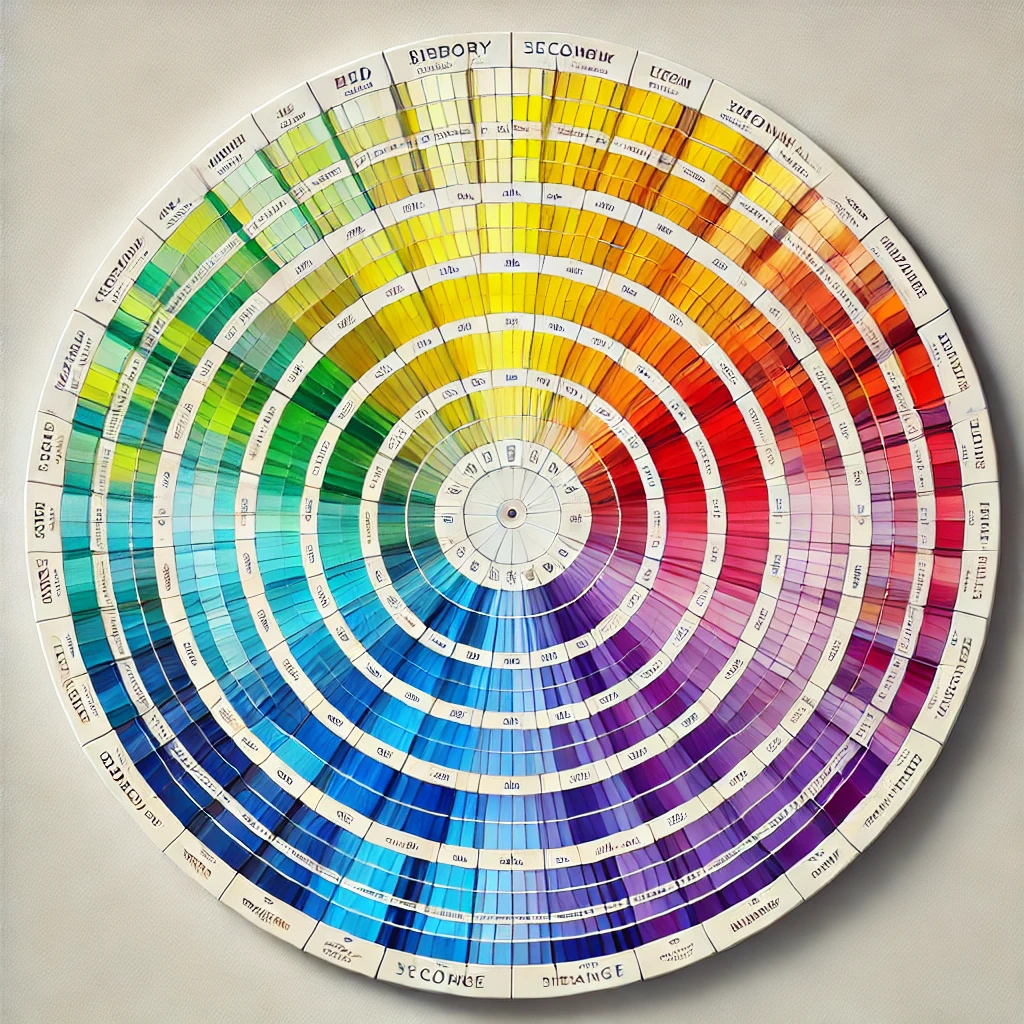
Aesthetic Appeal
Powder coating provides a smooth, even finish with a wide variety of textures and sheens, ranging from matte to high-gloss. Its ability to offer consistent coverage on intricate shapes and edges makes it an appealing option for projects where a flawless look is wanted by the client. Additionally, powder-coated finishes are often more uniform, with fewer imperfections, due to the curing process.
Both powder coating and liquid painting offer distinct advantages for metal finishing, but the choice between powder coating vs liquid painting largely depends on your specific needs. For more information on different coatings and how they’re used in industries across the UK, visit the Surface Engineering Association (SEA).
Liquid painting offers more flexibility in terms of achieving specialised effects, such as metallic, pearlescent, or high-gloss finishes. For projects that require a specific visual effect or custom colour blending, liquid painting may provide the desired aesthetic. However, the final appearance can be more dependent on the skill of the applicator, and uneven coats or imperfections may sometimes occur.
Whether you’re a professional working on large-scale metal components or a DIY enthusiast tackling a personal project, choosing the right finishing method can make all the difference.
Contact us to discuss your project and get expert advice on the best coating solution for your needs.

